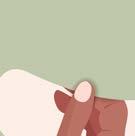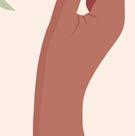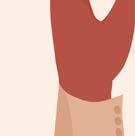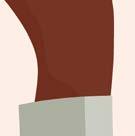BoomeranG BoomeranG
YOURPLACEFORFUN,GAMES&MORE.
ISSUE #15 • NOV 2021
KINDNESS
IS FREE
Always smile and wave at everyone you see.
– Collin


Help those in need to cross the street.
– Kennedy










Makefriends cheer them up are sad. – Trinity













02
friendswiththemor
when they




IN THIS ISSUE

HOW TO BE KIND FROM LOCAL KIDS
Spreading Kindness Can Make the World a Better Place
WHAT'S EMPATHY?
And What Is the Body's Response? Practice Empathy

SAYING YOU'RE SORRY
Saying You're Sorry Helps Everyone Feel Better
KINDNESS EACH DAY KEEPS THE DOCTOR AWAY
Why Being Kind Is Good for Your Health






















BOOKSHELF

READ MORE ABOUT KINDNESS

up
CREATE A SNACK BOARD TO SHARE WHAT'S KINDER THAN SHARING A SNACK? Trinity Boomerang 03
HOW TO BE KIND FROM LOCAL KIDS
“All of us, at some time or other, need help. Whether we’re giving or receiving help, each one of us has something valuable to bring to this world. That’s one of the things that connects us as neighbors — in our own way, each one of us is a giver and a receiver.”
– Fred Rogers
Did you know that kindness is powerful, and it’s more important now than ever before? Spreading kindness can help make the world a better place, give someone a reason to smile and provide positivity. The cool thing about it is that practicing kindness is simple, and anyone can do it.
Check out tips from some Hancock County first- and second-graders on simple ways to be kind.
04 Boomerang
• JUST SAY, “HELLO,” SMILE AND DON’T BE JUDGE-Y. – MEGAN
• JUST BE NICE, AND IF YOU SEE SOMEONE LONELY, YOU CAN SAY, “HI!” – SKYE
• SHARE STUFF AND LET THEM PLAY. – PAISLEY
• CLEAN UP TRASH IN THE PARK. – DEAN
• STAND UP FOR EACH OTHER. – LUKE
• HELP SOMEONE SMALLER READ A BOOK. – BRENT
• WAVE AND SAY, “HI,” ESPECIALLY IF THEY ARE BY THEMSELVES. – TYSON
• TREAT PEOPLE LIKE YOU’D WANT TO BE TREATED. – NOAH
• BE NICE. – RYLEE
• ALWAYS SMILE AND WAVE AT EVERYONE YOU SEE. – COLLIN
• SHARE TOYS. – REAGAN
• GIVE THEM A BASKET OF CHOCOLATE-DIPPED DONUTS. – NOLAN
• HELP PEOPLE WHO DON’T HAVE HOMES AND PLANT MORE FLOWERS. – ELLIOT
• MAKE FRIENDS WITH THEM OR CHEER THEM UP WHEN THEY ARE SAD. – TRINITY
• HELP SOMEONE WITH GARDENING, HOUSEWORK AND GIVE THEM A GIFT. – DAVID
• HELP THOSE IN NEED TO CROSS THE STREET. – KENNEDY
• PUSH PEOPLE IN WHEELCHAIRS. – BRENNAN
Imagine what our neighborhoods, schools and communities would be like if each of us offered just one kind word or one kind act to another person every day.
We hope that these quotes from your fellow Hancock County students remind and inspire you to be kind to one another and also to be kind to yourself. Think of the impact we could make on the world if each of us became more intentional about being kind!
Boomerang 07 Boomerang 05
"WHEN ANYTHING IS POSSIBLE, BE KIND."
WHAT'S EMPATHY? AND WHAT’S THE BODY’S RESPONSE
We’ve all been there: Your best friend is going through a difficult time, or your sibling had a bad day at school, and they’re coming to you for support. How can you best be there for them? The answer is simple: Have empathy!
Chances are you’ve heard that word before, but what exactly is empathy? It’s the ability to understand what other people are feeling or going through. Empathy allows you to see things from another person’s perspective by imagining yourself in their place. In other words, to be empathic means to put yourself in someone else’s shoes.
Practice Empathy!
How would you show empathy in the following scenarios?
1. You’ve been best friends with Sam since kindergarten. Since the start of school this year, you’ve become good friends with Taylor, too. But Sam told you yesterday that she’s not going to be friends with Taylor anymore and neither should you. Now Taylor is sitting alone in the cafeteria, looking really sad. What should you do?
2. Your best friend, Dan, has started to pick on Peter, a quiet kid in your class. You thought it was funny in the beginning, but now Dan’s getting meaner and meaner. Peter tries to stay away from Dan during the day, but Dan just picks on him more. Peter is becoming more and more upset. Other kids in the class still think it’s funny. What should you do?
3. Your best friend’s grandmother just died. She wants you to come over on Saturday night to spend time with her after the funeral because she’s been so sad. Your dad bought you tickets to go see your favorite sports team play on Saturday night. Besides that, you’re not really sure what to say to your friend. What should you do?
06 Boomerang
LOOK OUTSIDE YOURSELF
While it’s pretty easy to understand our own feelings and emotions, trying to understand someone else’s can be a bit more difficult. Fortunately, empathy is a skill that you can learn and strengthen. Here are some tips for becoming more empathetic:
• Talk to people from different backgrounds and walks of life.
• Actively listen (or give your full attention) to those around you.
• Ask people questions to learn more about them and their lives.
• Try to understand someone else’s perspective, even when you may not agree with them.
• Picture yourself in someone else’s situation. How might they think and feel?
ITS BENEFITS
Empathy is a wonderful skill to have. It teaches us how to care deeply about those around us. If you’re an empathetic person, chances are, other people feel comfortable telling you about their problems or coming to you for advice. This builds social connections with others, while helping us to learn how to regulate our own emotions.
SOME DRAWBACKS
With empathy, you feel the other person’s stress, anxiety and anger in your body. When you embody other people’s emotions, you may feel responsible for relieving their pain. You might even try to fix their problems or over-involve yourself in the situation. This is when too much empathy becomes a bad thing. You may begin to feel drained, overwhelmed or find it difficult to set boundaries in your relationships with other people. If
this is the case, learn to separate other people’s problems from your own. Instead, focus on being a listening ear and source of comfort to those around you.
Humans desire to be seen and heard. Being empathetic shows that you care. We should all practice empathy, but we should do so with care and consideration for ourselves and for others.
Try to implement some of those tips above in your everyday interactions with those around you. You just might be surprised by how empathy can change your life!
Boomerang 07
BY NEMOURS
KIDS HEALTH EXPERTS
FAMILIAR?
If so, you’re like lots of kids who sometimes argue with their friends and family members. Let’s face it, it’s not always easy to get along with sisters and brothers, parents and friends. Kids aren’t perfect, and they sometimes do things that get them into trouble. Saying “I’m sorry” helps everyone feel better.
Saying you’re sorry is called “apologizing.” When you apologize, you’re telling someone that you feel bad for the hurt you caused, even if you didn’t do it on purpose. People who are apologizing might also say that they will try to do better. They might promise to fix or replace what was broken or take back a mean thing they said.
HOW DOES IT MAKE YOU FEEL?
When you apologize to someone — and really mean it — it’s because you have stopped to think about how the person may have felt because of what you did or said. When you stop to think about the other person’s feelings, you begin to feel sorry for your behavior. You might even feel embarrassed or ashamed if you did something you knew was wrong.
“I DIDN’T DO ANYTHING!”
“IT’S NOT MY FAULT!” “SAY YOU’RE SORRY!” SOUND
08 Boomerang
Even if what happened was an accident or you did something you didn’t mean to do, you would probably still feel sorry if you knew the other person’s feelings were hurt. After apologizing, you might feel a little better (the other person probably will, too).
When you apologize in a caring way, you feel good because you are trying to make things right again.
WHAT DOES AN APOLOGY SOUND LIKE?
There are many ways to apologize. Here are some examples:
• “I’m sorry about the mean thing I said to you.”
• “I’m sorry I lost your book.”
• “I was mad, but I shouldn’t have called you a name. I’m sorry.”
• “I’m sorry I hurt your feelings.”
• “I’m sorry I yelled at you.”
• “I’m really sorry I hit you when I was mad. That was wrong. I won’t do it anymore.”
When you apologize to someone, he or she might apologize back to you: “That’s OK; I’m sorry, too. I shouldn’t have teased you.” And then maybe you can both feel friendly again.
WHEN SHOULD YOU APOLOGIZE?
Kids might need to apologize if they hurt or teased someone or lost something that belonged to someone else. They might need to apologize if they broke something (even by accident — oops!), or if they did something they knew was wrong, like telling a lie or breaking a rule on purpose. Maybe they did something their parent told them not to do, or maybe they didn’t do something they were supposed to do.
Kids might need to apologize to each other or to a grown-up. Grown-ups can apologize, too, to other grown-ups or even to kids. After all, even grown-ups make mistakes sometimes. By apologizing when they’re wrong, grown-ups can set a good example and show kids how to do the right thing and apologize when they need to.
WHAT IF YOU WERE ANGRY?
Everyone feels angry with someone else now and then. Being angry is OK and nothing to apologize for. But knowing how to tell someone what made you angry is important.
When little kids are angry, they might hit or kick or scream. They don’t have much self-control, and they might not have learned yet that it’s wrong to hit someone because they’re upset.
But as kids get bigger and can use words, they know better than to hit or kick or scream when they’re angry. They learn to express their feelings with words. Of course, the words they say when they’re angry might be stronger or louder than usual, but the words don’t have to be mean. You can tell someone you’re upset and why without putting that person down. You can be honest about how you feel without being unkind.
But sometimes anger takes over, and kids might lose self-control. They might say mean things, lose their cool and hit or push someone. Afterward, most kids realize that even if they were right to be angry, it is not OK to behave that way. That’s when an apology is definitely needed.
DOES APOLOGIZING FIX EVERYTHING?
Saying I’m sorry when you need to is the right thing to do. It does a lot of good. But by itself, it might not be enough to make everything all better again. Sometimes along with an apology, a person needs to fix the mistake or promise to do better. Sometimes doing a nice thing for the person after you apologize helps show that you really are sorry and want to be friendly again.
Sometimes a heartfelt “I’m sorry” fixes everything right away. Other times, it might take awhile for someone to feel friendly after you apologize. You might need to give the other person some time. Even after you say you’re sorry, you might still feel bad about what you said or did, but you can feel good about apologizing and about making up your mind to do better.
When someone apologizes to you, you might not feel like being friendly again right away. Once in a while, if a person doesn’t change their behavior, you might not want to be friends anymore. You might feel relieved and glad that the other person apologized and admitted being wrong. But if someone keeps behaving in mean ways or does something that keeps hurting, you might not feel the same way anymore. Just because someone apologizes to you doesn’t mean you have to be friendly again. That part is up to you.
Boomerang 09
KINDNESS EACH DAY KEEPS THE DOCTOR AWAY
KINDNESS EACH DAY KEEPS THE DOCTOR AWAY
WHY BEING KIND IS GOOD FOR YOUR HEALTH

10 Boomerang
Do you ever get a warm and happy feeling in your body when you do something kind for someone else? Scientists have found that when we do kind things for others, our bodies release special chemicals that make us feel happy and healthy. Being kind to others is important for many reasons, but here is why being kind can actually help you be healthier.


HAPPY HORMONES
Scientists have found that when we do nice things for others, our body releases certain hormones that make us feel good, too. Hormones are chemicals in our bodies that act like messengers, delivering important information throughout the body. One of these released hormones is called “oxytocin.” Oxytocin makes the warm and fuzzy feelings we talked about earlier, but it also delivers a message throughout the body telling your blood vessels to relax, which lowers your blood pressure. Having a normal blood pressure is really important for the health of your heart.
Another hormone released in your body when you do something kind is serotonin. Serotonin has the important job of making you feel happy and good about yourself. It can have lots of positive effects on your overall health, such as improving your sleep, helping you digest your food better and even healing cuts and bruises a little bit faster.
FEELING GOOD INSIDE AND OUT
Another great thing about doing acts of kindness for others is that it’s good for both your physical and mental health. Scientists found that being kind to others can improve your own happiness and lessen feelings of stress and anxiety.
Being kind to someone you don’t know very well could also lead to a new friendship. Think about a time that you might have felt lonely and sad. Did someone do something nice for you that made you feel better? Next time you see someone you think is feeling sad or lonely, consider inviting them to sit with you at lunch or hang out after school because having friends you can count on is also really important in keeping your mind and body healthy.
BEING KIND TO YOURSELF
Your parents and teachers have probably told you many times to be kind to others, but it is just as important to be kind to yourself. Being kind to yourself means taking time to rest after a hard day, not beating yourself up about a bad grade and learning to love who you are. By being kind to yourself, you will find that you feel happier, less stressed and, hopefully, healthier.
There are many ways we can keep our bodies healthy, including exercising and eating healthy foods, but one of the easiest ways we can help our minds and bodies stay in tip-top shape is by being kind to others. Today I challenge you to do at least one kind thing for someone else and see how you feel. If you feel happy and good about yourself, you know that your body is releasing hormones like oxytocin and serotonin. Even if you don’t feel very different, know that your act of kindness probably made the other person’s day much better, and that is a great reason to be kind, too.
Boomerang 11
KINDNESS & EMPATHY WORD SEARCH
KINDHEARTED NICE
EMPATHY GRACE
KINDNESS
GENEROUS
HELLO, UNIVERSE BY ERIN
ENTRADA KELLY
WHEN YOU TRAP A TIGER BY TAE KELLER
ONE DROP OF KINDNESS BY JEFF
KUBIAK
IT WILL BE OK: A STORY OF EMPATHY, KINDNESS, AND FRIENDSHIP BY LISA KATZENBERGER
BE KIND: YOU CAN MAKE THE WORLD A HAPPIER PLACE! 125 KIND THINGS TO SAY & DO BY NAOMI
 SHULMAN
SHULMAN
SHARING FRIENDS LOVE COURTESY COMMUNITY SORRY FEELINGS
12 Boomerang
D A U N V Q Y E P I L N I C E C C X X C V H M W V O N B K G O F I K T O G I C C V Y J I E M D S Q I S U G V S E K R N N M S R R H N H R R V W L Z D E U D T A K F D A T A E D V N R N F B X E W R H R E C G M E O I E E V Z M K I E I S E F S U T M Z E U C P H E A N Y D S S Y P I G L S K A F N R G G V N U T S R S I C Y T Q D T S G R P K P O Z O N G O H K S E Z D K C B R L E R G Z J Y Y J D R W S V Z A I Q R S H Q J E V S S A W H M Y Z E Y Z B J V P S
Create aSnack Board toShare

November is all about kindness and giving thanks. What’s kinder than creating a snack to share? Whether it be after-school goodies for you and your siblings, or a Thanksgiving appetizer for the entire family, snack boards are a fun and easy creation for everyone to enjoy! Here’s how to do it.
WHAT YOU’LL NEED:

• A large platter or wooden food board (one NOT used for cutting raw meat!)
• A variety of your favorite snacks
• Small bowls or dishes in which to separate some of your grub on the tray
HOW TO DO IT:
1. Use the large platter or wooden board to stage your snacks.
• If they don’t fit on one board, put multiple platters together or use bowls and plates to surround the board.
• You can make your snack board any size you want, but if you’re sharing with a large group of people, the bigger the better!
2. Fill up your board with a variety of your favorite snacks. Place several bowls on your tray to hold dips and small snacks such as nuts or candies.
• Fruits and vegetables, sweets and homemade goodies or all of the above. The possibilities are endless! Here are some ideas for snacks to fill your board:
o Fruits: apple slices (with caramel dip), grapes, strawberries, cranberries, blueberries, pomegranates, dried apricots and dried mango
o Vegetables: broccoli and carrots (with vegetable dip), bell peppers (with hummus), cucumbers, cherry tomatoes, celery, olives and cauliflower
o Sweet treats: chocolate candies, gummy candies, licorice, jelly beans, candy corn, cookies, yogurtcovered pretzels, trail mix, caramel popcorn and kettle corn
o Salty treats: potato chips (assorted), chip dip, mixed nuts, pita chips and hummus, popcorn, pretzels, crackers and cheese balls
o Other snacks: cheese sticks, turkey roll-ups, salami, beef jerky, animal crackers, cheese or peanut butter crackers, Cheez-It® crackers and Goldfish® crackers
• Arrange your snacks however they fit best on your board or platter. There are no rules here, so have fun!
3. Now that your snack board is assembled with all your favorite treats, there’s only one thing left to do: Enjoy it with all your friends and family!
Snack boards are the perfect creation to share because they can be made using multiple snacks with something for everyone to enjoy. Not only can you share snack boards with your friends and family, but you can all work together to make them, too. So, grab a board, empty your cabinets of all your favorite nosh and have fun!
Boomerang 13
Become the healthiest generation ever!
When you know more about your health and how to take care of it, you can be more, do more and have more fun — starting now!



























































 SHULMAN
SHULMAN

